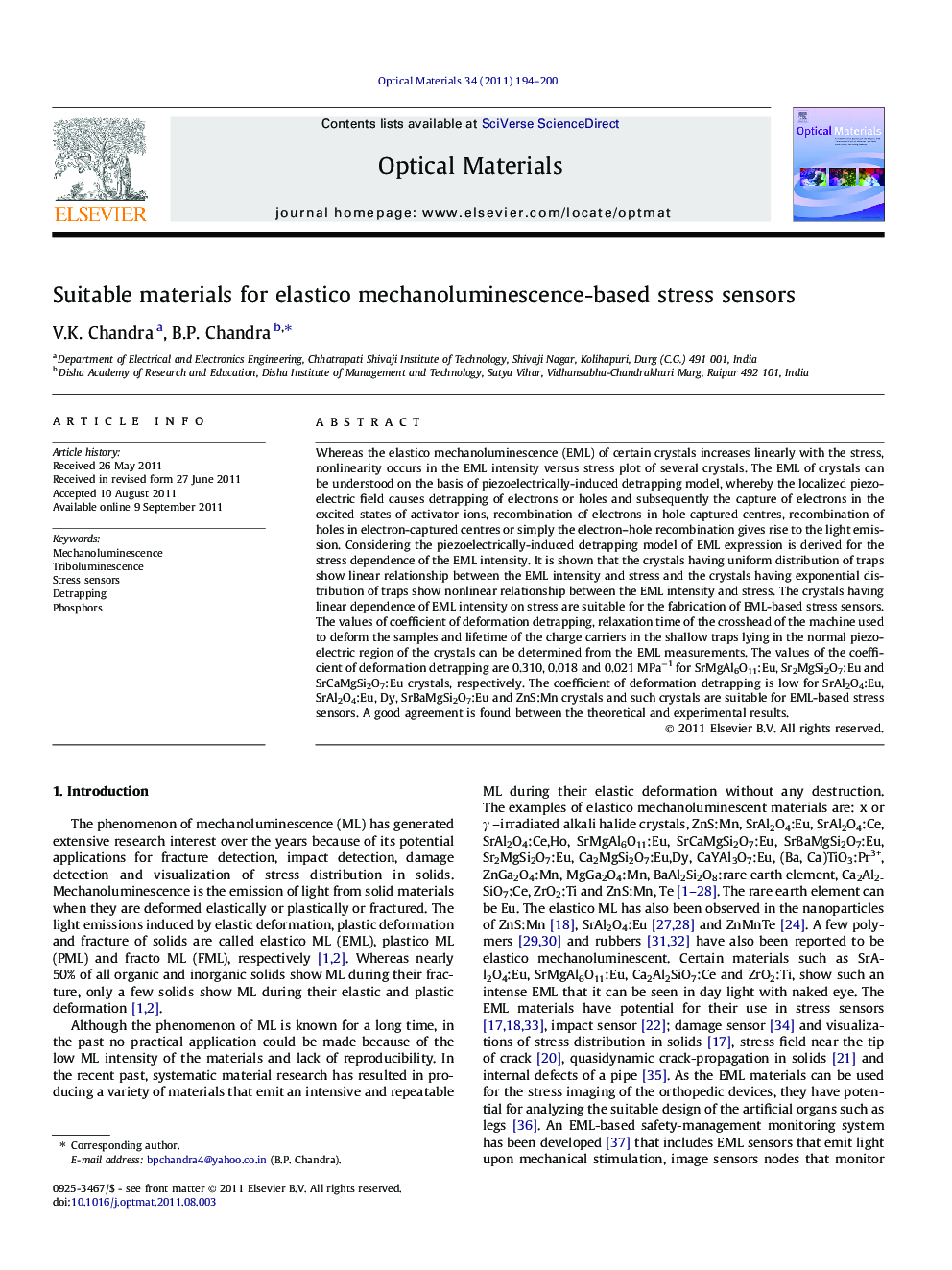| Article ID | Journal | Published Year | Pages | File Type |
|---|---|---|---|---|
| 1495976 | Optical Materials | 2011 | 7 Pages |
Whereas the elastico mechanoluminescence (EML) of certain crystals increases linearly with the stress, nonlinearity occurs in the EML intensity versus stress plot of several crystals. The EML of crystals can be understood on the basis of piezoelectrically-induced detrapping model, whereby the localized piezoelectric field causes detrapping of electrons or holes and subsequently the capture of electrons in the excited states of activator ions, recombination of electrons in hole captured centres, recombination of holes in electron-captured centres or simply the electron–hole recombination gives rise to the light emission. Considering the piezoelectrically-induced detrapping model of EML expression is derived for the stress dependence of the EML intensity. It is shown that the crystals having uniform distribution of traps show linear relationship between the EML intensity and stress and the crystals having exponential distribution of traps show nonlinear relationship between the EML intensity and stress. The crystals having linear dependence of EML intensity on stress are suitable for the fabrication of EML-based stress sensors. The values of coefficient of deformation detrapping, relaxation time of the crosshead of the machine used to deform the samples and lifetime of the charge carriers in the shallow traps lying in the normal piezoelectric region of the crystals can be determined from the EML measurements. The values of the coefficient of deformation detrapping are 0.310, 0.018 and 0.021 MPa−1 for SrMgAl6O11:Eu, Sr2MgSi2O7:Eu and SrCaMgSi2O7:Eu crystals, respectively. The coefficient of deformation detrapping is low for SrAl2O4:Eu, SrAl2O4:Eu, Dy, SrBaMgSi2O7:Eu and ZnS:Mn crystals and such crystals are suitable for EML-based stress sensors. A good agreement is found between the theoretical and experimental results.
► Explores suitable materials for elastico mechanoluminescence-based stress sensors. ► Piezoelectrically-induced detrapping is responsible for the EML emission. ► Materials having uniform distribution of traps are suitable for EML-based sensors. ► The coefficient of deformation detrapping can be determined from the EML measurements.
